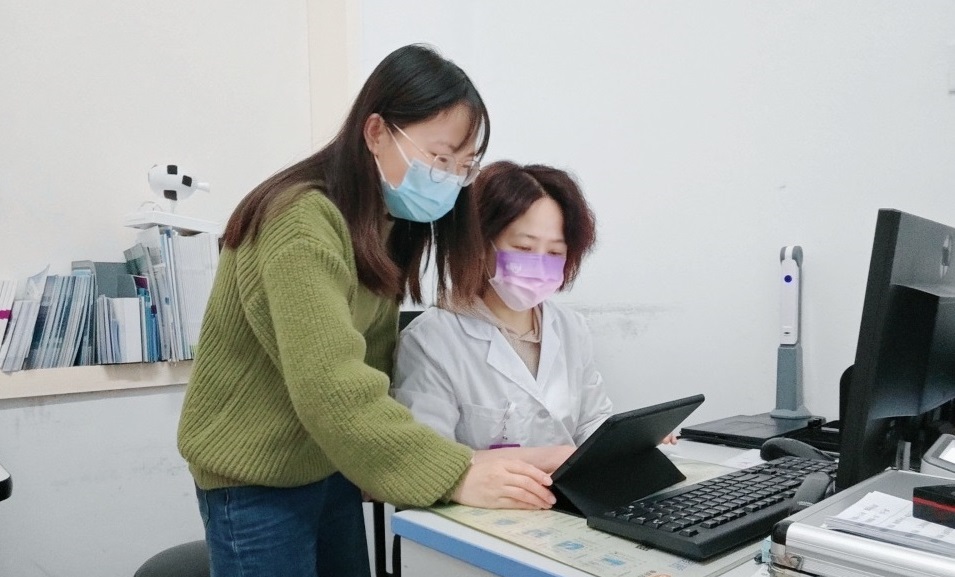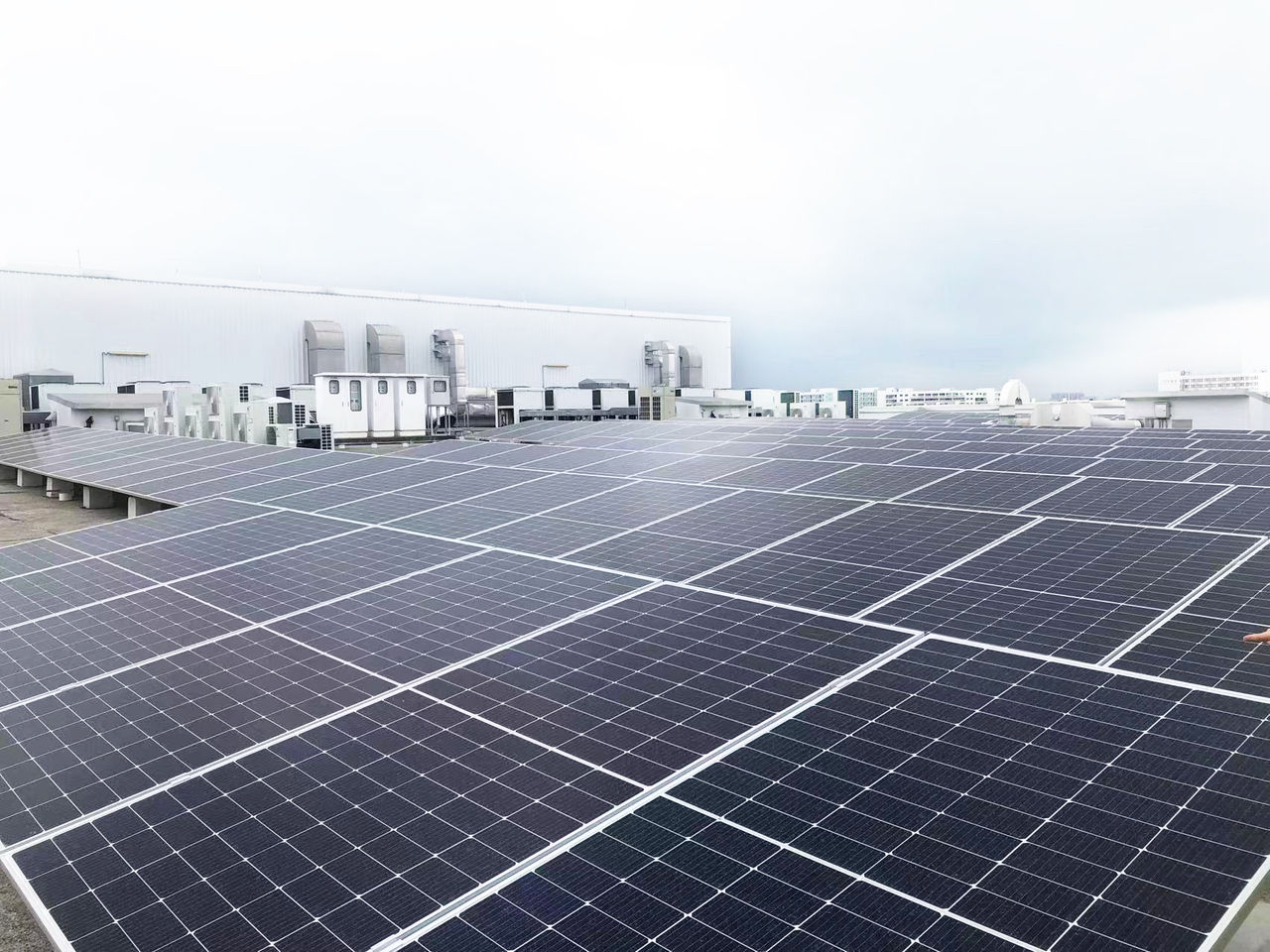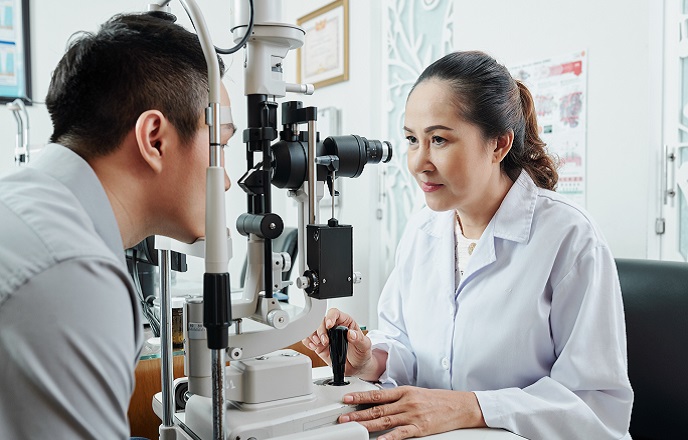Santen Commercial Excellence
At Santen, we are committed to providing valuable products and solutions to more patients and medical practices around the world by leveraging an expertise in ophthalmology cultivated over many years and an ability to solve problems from the patient’s perspective.
In this issue, we will focus on a project that is deepening our contribution to patients in the Chinese region through the introduction of a successful model used in Japan, while also touching upon the current status of, and challenges facing, ophthalmic care in China.
Eye-Related Challenges in China
Diseases of the eye, including glaucoma, diabetic retinopathy, pathologic myopia, age-related macular degeneration, and cataracts are on the rise in China due to population growth, aging, and changing lifestyles. Glaucoma, in particular, can lead to blindness if left untreated. The number of glaucoma patients in China has been increasing over the past several years and was expected to have affected approximately 22 million people by 20201,2.
Because glaucoma has few subjective symptoms, early detection and treatment through regular eye exams are critically important. But this is easier said than done, because there is not only an nationwide challenge of lack of ophthalmologists and inadequate medical infrastructure but also the burden of regular hospital visits onto patients.
To help address these issues and reach as many glaucoma patients as possible, in 2021 we began applying the successful approach to glaucoma patients and medical professionals used in Japan to our organization in China.
1 Quigley HA, Broman AT. The number of people with glaucoma worldwide in 2010 and 2020[J]. Br J Ophthalmol, 2006, 90(3):262-267. DOI:10.1136/bjo.2005.081224.
2 Cheng CY, Wang N. Prevalence and causes of vision loss in East Asia in 2015: magnitude, temporal trends and projections[J]. Br J Ophthalmol, 2020, 104(5): 616-622. DOI: 10.1136/ bjophthalmol-2018-311946.
Establishing Commercial Excellence Optimized for China
Commercial excellence at Santen is driven by our ambition to achieve optimal eye disease treatment and eye care for patients.
Specifically, this means formulating high-quality strategies based on globally standardized models covering every step of the process, from research and development through to delivery of products to patients, thoroughly managing KPI (Key Performance Indicator) and PDCA (Plan-Do-Check-Act) cycles and maximizing the value of the eye disease treatments and eye care products provided to patients by healthcare professionals, pharmacists, and others.
Members in Japan and China have already begun working together to leverage the know-how and experience of Japan to establish commercial excellence optimized for China.
To better serve patients in need of treatment for glaucoma, the first step in China was to approach 300 ophthalmologists. At the same time, Santen China has been able to develop a system for grasping and understanding the needs of ophthalmologists and then linking them to proposals, develop a training program for medical representatives (MRs), and operationalize the PDCA cycle.
This has made it possible to grasp the status and results of sales activities both quantitatively and qualitatively, and each MR now has a sense of purpose and is able to take the next step and make improvements. In addition, training, which used to be conducted by each department, is now being promoted through cooperation across departments.
Efforts like these have revitalized communication between MRs and physicians and contributed to reach and deliver our glaucoma products more to the patients in China. In addition to increasing the motivation of employees in China and strengthening organizational collaboration, they also provide a valuable opportunity for employees in the Japanese operation to reflect on their activities, creating a virtuous cycle of cooperation.


MR explaining drug information to a Chinese ophthalmologist
Suzhou Plant Reducing its Environmental Impact
To meet the growing needs of patients, Santen is developing a comprehensive manufacturing and supply system that takes advantage of the strengths and characteristics of the Suzhou Plant in China and the Noto Plant and the Shiga Product Supply Center in Japan. As part of Santen’s corporate social responsibility, the Company is taking steps to reduce its environmental impact while improving productivity.
In accordance with national regulations, the Suzhou Plant has installed water recycling equipment and reuses more than 90% of the water it consumes. The Suzhou Plant has received an award from Jiangsu Province, where the plant is located, for this and other initiatives that prioritize the efficient use of water resources.
Meanwhile, 1,784 solar panels were installed at the Suzhou Plant in October 2023 to reduce CO2 emissions. The newly installed solar panels are expected to generate one million kW of electricity every year, reducing CO2 emissions by 704 tons per year and power costs by approximately 10%.

Solar panels installed at the plant in Suzhou, China
Everywhere around the world, needs related to eye health continue to increase year after year, and some diseases require continuous treatment, so it is our duty to develop and provide a stable supply of effective solutions. Santen is committed to sharing and utilizing its know-how and assets across regions, and all employees will work together as one to continue contributing to society through sustainable growth.



